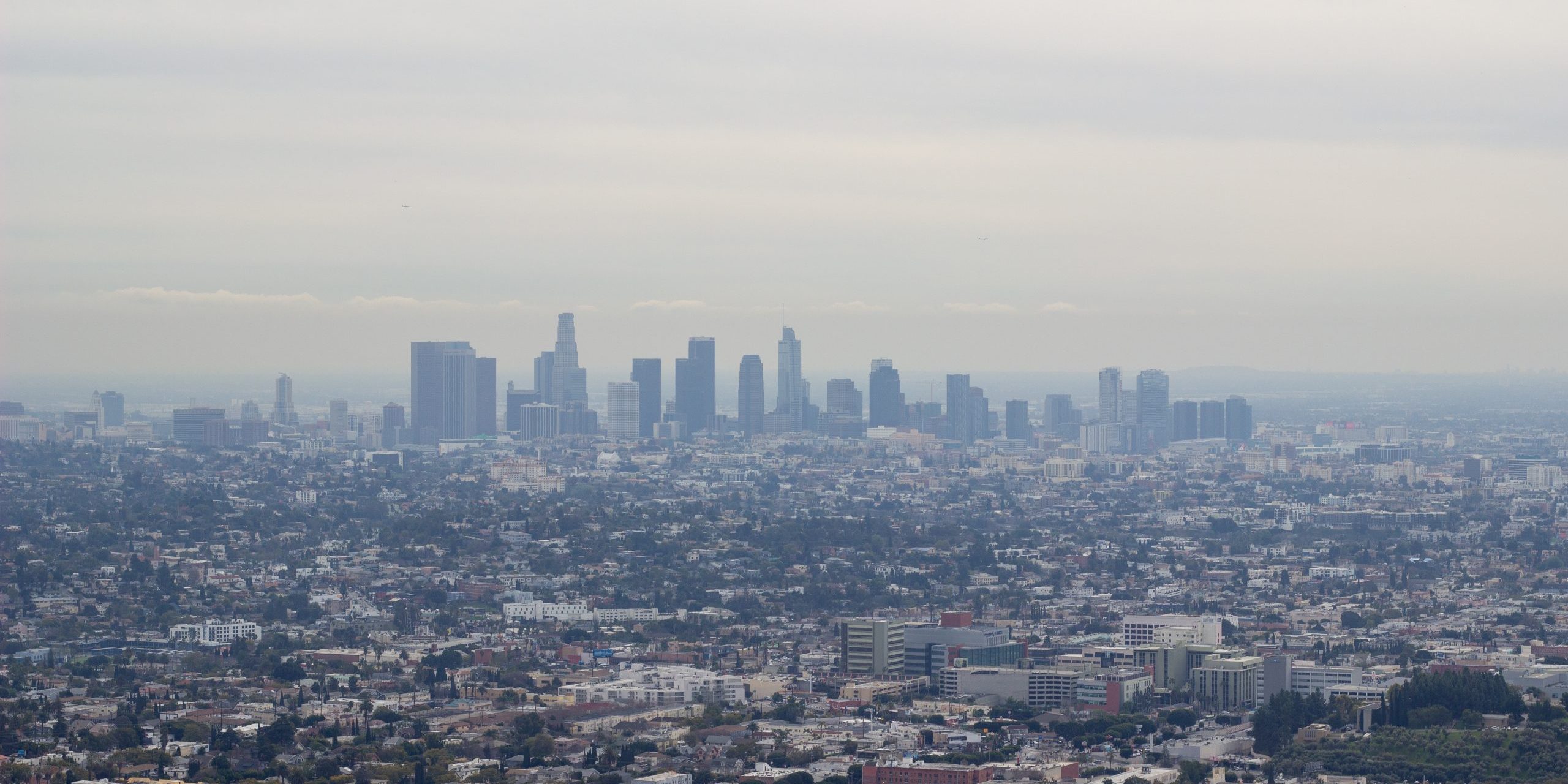Wherever you go in Los Angeles, music is sure to follow. Whether you’re walking through LA with your headphones on, listening to music blasting out of passing cars, witnessing the spectacle of street performers, or scowling at the earthquake bass booming from the sound systems of your loudest neighbors, music permeates the landscape. For as long as there has been a Hollywood, LA has been a worldwide hub of music industry and culture, so references to the landscape are prevalent in music. Some of us are from LA, and some of us aren’t, but the city is so dense with places to be and things to see that we were all eager to explore it further. Our methodology for doing this? What we call the Los Angeles “Soundscape.” Many talented musicians have taken their musical inspiration from this city, so we decided to use their place-based music as a touchstone to build a new musical and cultural map of Los Angeles. This is the map that we took to guide us on our journey.
Kayalani’s Pick: Griffith Observatory
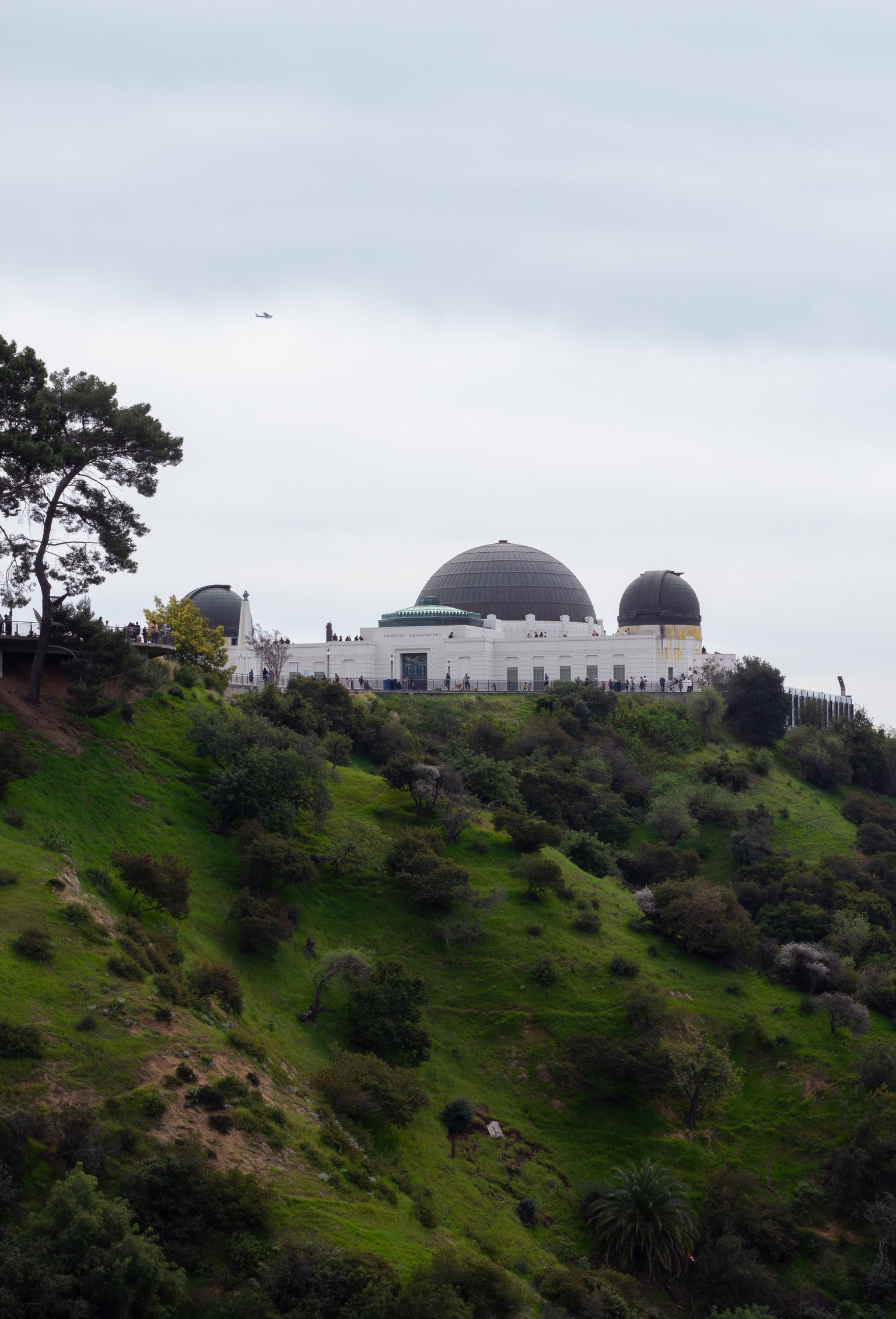
Allow me to set the scene: the group and I hiked up a dirt road at approximately 11:26 am on a Sunday morning, overlooking the city of stars and gazing at the Hollywood sign in clear sight. Stopping every few feet to snap pictures, I pondered what on Earth I would write about. Growing up, I always feared LA. The city was associated with traffic, stress from finding parking, and a sense of bigness that I quite honestly was too scared to approach. So I continued to gather every word I could until… there it was. A massive, space gray dome atop luscious green hills in the fog-filled sky left me speechless. The Griffith Observatory stood before us with a sea of tourists speaking all different languages but united in their marvel at the overlook of the city. I too felt like your classic tourist that day, my digital camera in hand, a little bit overwhelmed, and in a constant state of awe. I’m certain that my feelings about LA shifted that day, or at least my view did.
The Observatory plays a major role in many iconic films, songs, and elements of pop culture, notably the 2016 movie musical, La La Land. The Griffith Observatory was home to Mia and Seb’s intimate dance scene to “Planetarium”, a backdrop of stars illuminating their new love for each other. While we visited during the day, no stars to be seen, I couldn’t stop thinking of that scene the whole time we were there, caught in the movie magic. Clearly, I wasn’t the only one. As I gazed over the skyline, “Another Day of Sun” accompanying my thoughts, I saw a girl around my age taking photos in a Mia-inspired yellow dress.
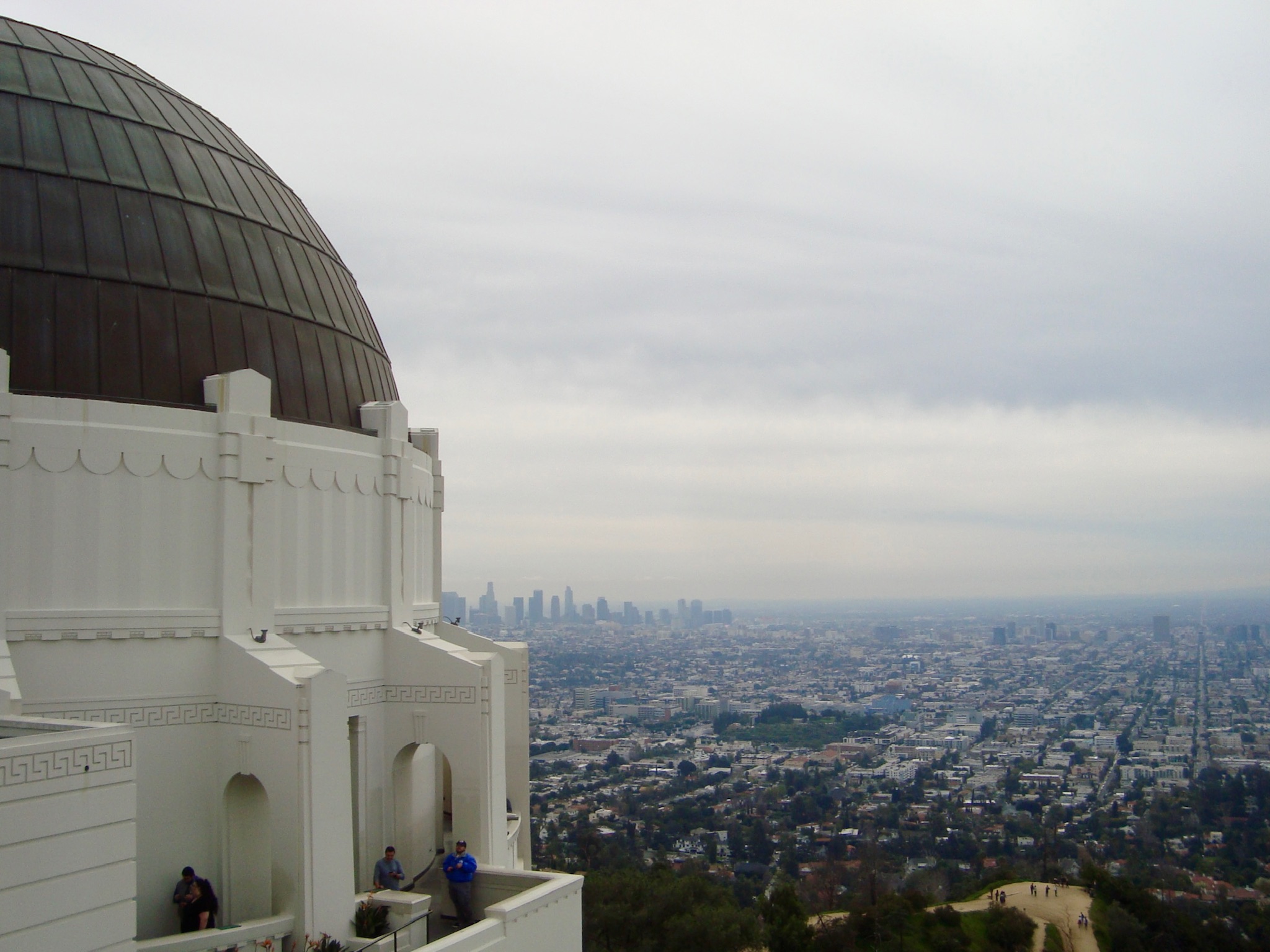
The dozens of awards and recognitions leave no question that La La Land made an impact on modern-day cinema, but one of the reasons I think this is true is because of the sense of escapism that it brought. The bright colors and feelings of utopia offered a sense of peace that we often ignore in real life. Listening to “Planetarium”, the graceful flittering of flutes, harp arpeggio, and romantic orchestration feels like a fantasy. That’s exactly how I felt walking around the Observatory. The breeze gently rustled my hair as I gazed over a city full of dreams. It was as if all my troubles, stressors, and the midterm I had later in the week, could simply fade away. Instead, I could observe Los Angeles objectively and from above, acknowledging the smallness of my problems in the ant-sized buildings and streetlights.
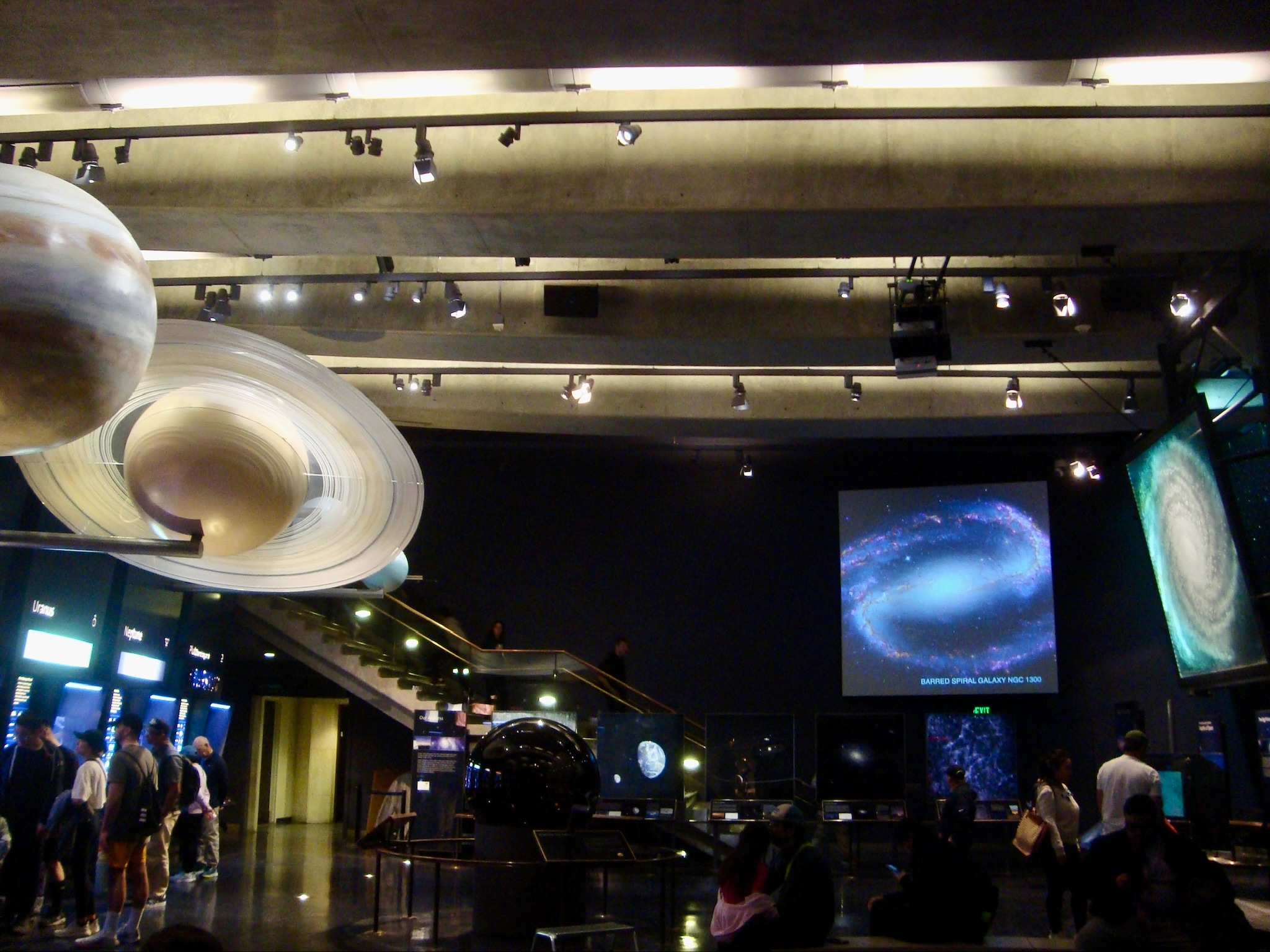
Replicas of every planet, a truly riveting gift shop experience, and even a living statue painted in gold added up to create a spectacle and truly quintessential LA experience. I must’ve snapped over 100 photos of just the skyline alone. I’m no expert in astronomy or science in general, but what I do know is that the Observatory brought people together in all the best ways. Elderly couples taking in the sun, toddlers wonderstruck at the ceiling mural, the elementary school field trip, a young couple wearing iridescent birthday hats, and the man whom I gave quarters to so his son could take a peek out the telescope. Los Angeles is a place of connection, a city for anyone to achieve anything. It was clear to me as I walked around that everyone at the Griffith had their own story to tell, their own reason for driving through LA at 11:26 on a Sunday morning. How I wish I could have heard every one.
Caroline’s Pick: Amoeba Music Store
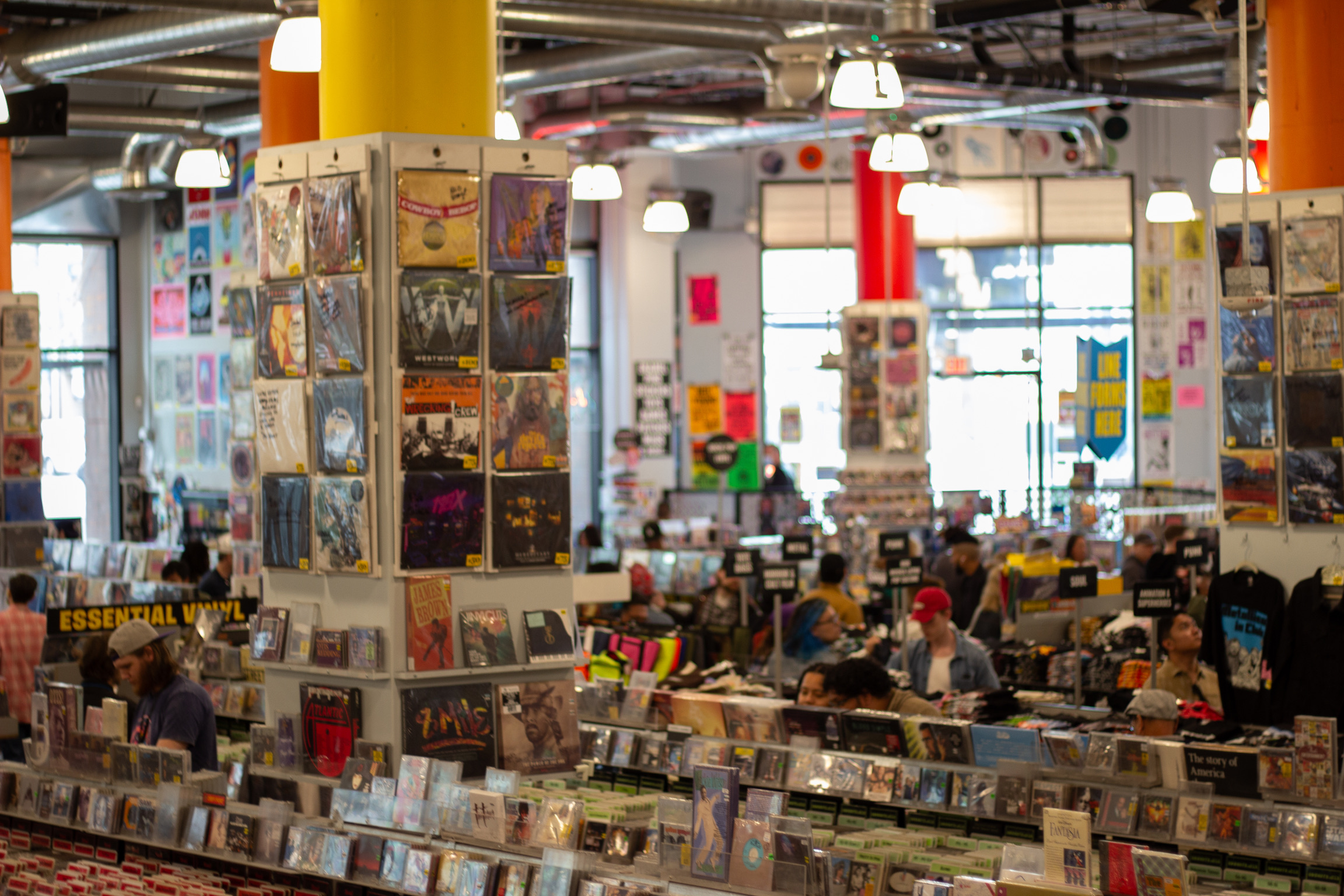
Situated on the corner of Hollywood Blvd and Argyle Ave, Amoeba Music Store is a treasure trove of an increasingly forgotten art: physical media.
Hailing from the Valley, a mere 20 minute—without traffic—drive from West Hollywood, I still never found myself frequenting the area. My first time at Amoeba was on a cloudy Sunday with the rest of the girls. It was only then that I realized how a record store like Amoeba persists and thrives in the age of technology where streaming services and online copies rule the world.
Maximalism was the first thing I thought of as I stepped inside the large ground floor of the red building Amoeba occupies. I was immediately met by the colorful rows of CDs, vinyl, cassette tapes, DVDs, posters, record players, and more. Immediate eyecatchers included the Lana Del Rey, A Tribe Called Quest, and Mac Miller album posters on the walls. Near the registers there were posters for current happenings: one of the Fonda Theatre’s shows located down the block and a timestamp for Arlo Park’s live in-store performance next week. At 2 pm, there were people of all ages sifting through the stacks, pulling out familiar titles and double taking at niche finds. Our group immediately dispersed, each of us being pulled to a different section catering to our unique interests. I slowly walked down the main aisle, gaping at the dozens of genres for music and film that spanned decades. Amoeba is the kind of place people can spend hours basking in the familiarity and love for media rather than having it tucked away in their phones. Most people had one hand pulling out different titles and the other holding onto blue baskets already holding a CD… or five.
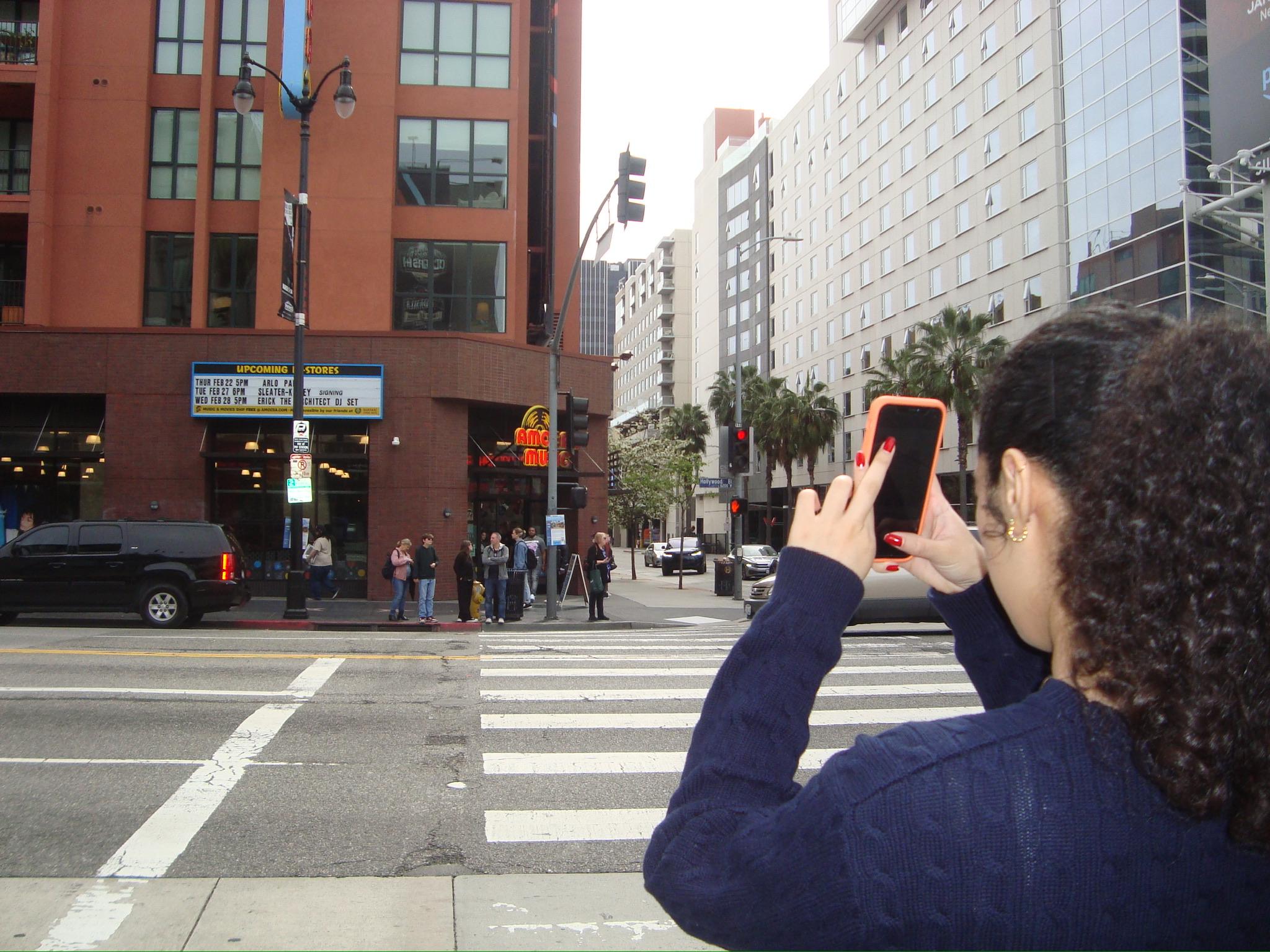
There’s an art to music listened to on CDs and vinyl. It’s a story that starts with the clicking of play and is not skipped through, sped up, replayed, or shuffled. It is played the way artists planned and ordered it, not subject to the whims and fleeting interest of its listeners. I love listening to entire albums on vinyl: these sessions are long and calming as I clear out an hour or two of my day to listen to them all the way through. It grounds me and slows me down from the quick-paced college student life that engulfs me. Unlike streaming, which is constantly playing in the background almost like an afterthought, physical music is almost always listened to intentionally. I’m not listening to drown out the too-loud conversations of other people in my coffee-study spots or to get me through the grueling uphill walk to class. This activeness rather than passiveness, is the beauty in physical media. It allows you to soak up the lyrics, rhythms, and feelings put into the shiny disks.
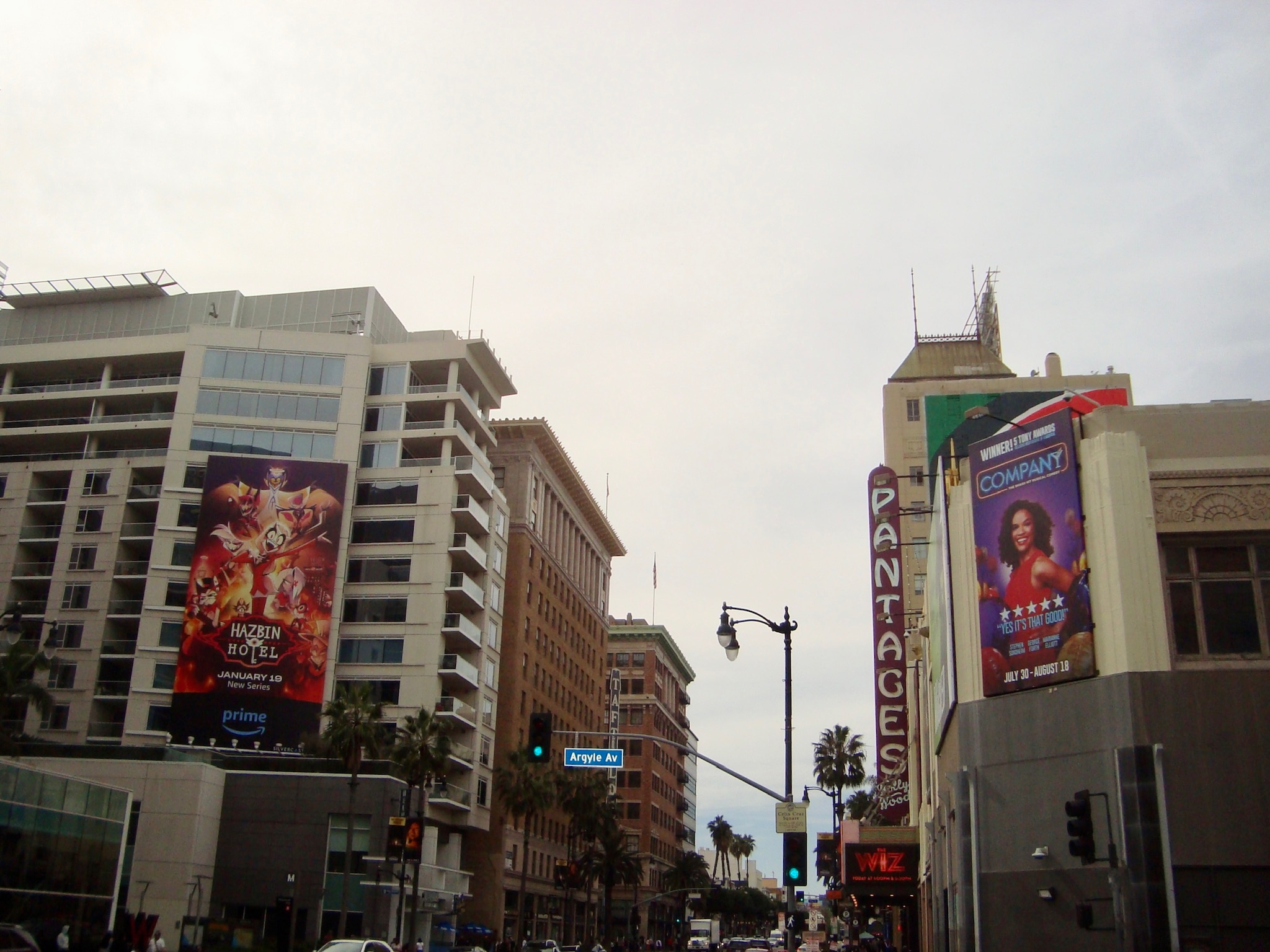
College students everywhere are collecting vinyl and buying secondhand walkmans and other slightly outdated devices. We all have Spotify and Apple Music accounts, but there is a persistent survival of the physical in an age of technology. Our parents and grandparents started with the physical, exchanged it for the convenience of the mobile/online, but we consistently return to what we know best. I’d like to believe that this return is brought on by an appreciation of authenticity. I wanted everyone to take a picture with their favorite album on vinyl, but our lunch reservation was looming and the parking meter was ticking. Hopefully another day we’ll find ourselves there, with more time to take everything in and more money to buy the Ponyo and Spirited Away movie posters calling my name. The store’s long lines give me hope that physical media’s demise is far-off.
Fun fact, Amoeba is the world’s largest independent record store, with three locations in Berkeley, San Francisco, and Hollywood. Street performers, bad traffic, and the smell of weed linger outside its LA storefront in the city’s signature fashion. If you ever catch yourself in Hollywood wishing for more than the Walk of Fame and other tourist traps, step inside. Amoeba lives and breathes music: when you’re inside, you feel like you do too.
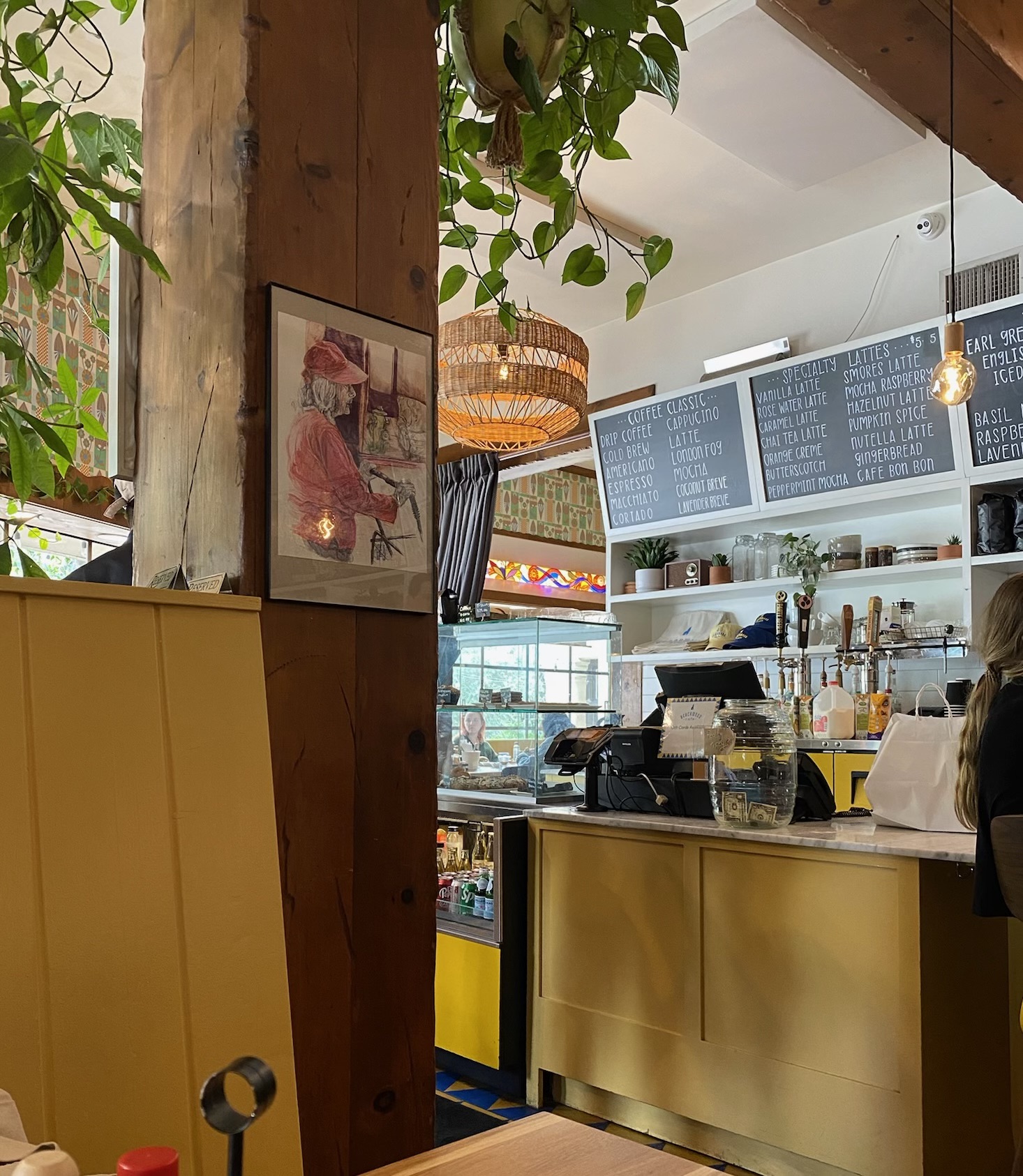
Au’Laila’s Pick: Beachwood Cafe
Beachwood Cafe is a Hollywood nestled eatery with an Americana menu, popularized by a British pop star. Harry Styles’s song “Falling” shot the previously quiet cafe into widespread demand. The famed line “And the coffee’s out at the Beachwood Cafe,” on his sophomore album, Fine Line, is the purpose of this musical pick. The lyric—rumored to be about how Style’s frequented the cafe with his ex, and how it became a sore memory for him—causes me to think about the way we memorialize people in the reminders of them.
Taking in the eclectic cafe’s hand drawn art, its hanging greenery and turquoise architectural accents, it’s easy to see why it’s the type of spot that sketches memories into your mind. The way we feel whilst laughing over eggs and pancakes with people we love, isn’t unique to Harry, or his sentimental Beachwood lyric, but captures one of the most complicated human experiences—reminders.
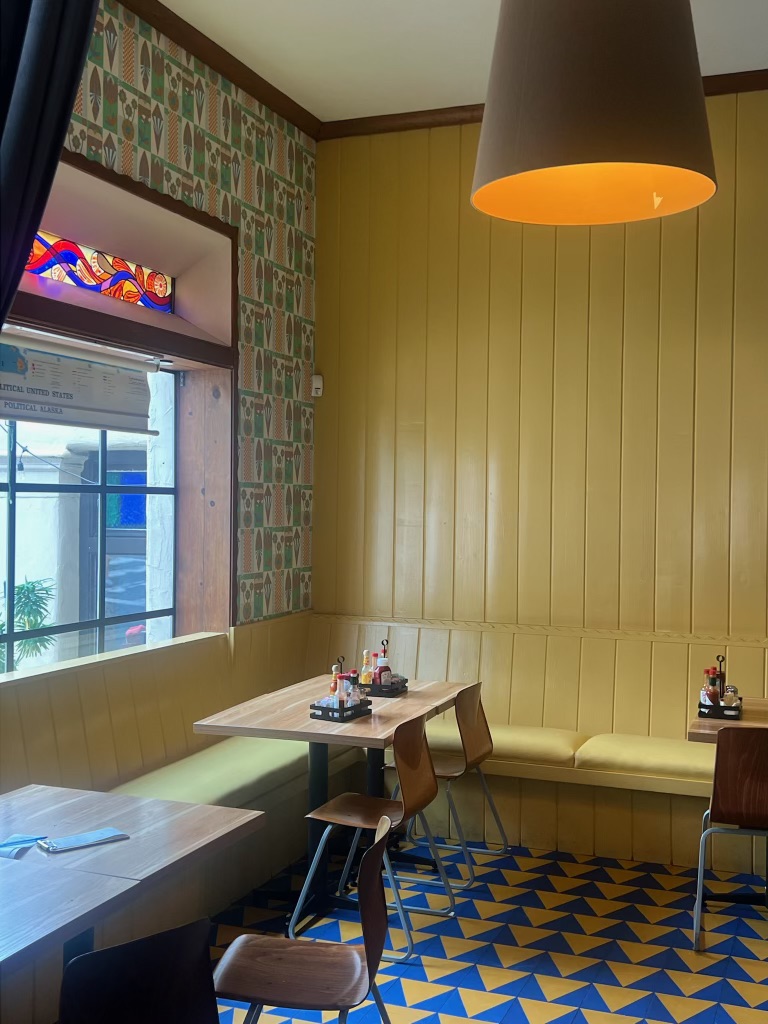
Mulling over my own mourning of friends, of the people I grew out of and a part from, I thought of my own feelings of reminders. The human mind develops an almost inconceivable ability to find the features of someone’s face in the steam of your tea. Or, maybe the moment when you hear a stranger’s laugh in public, that quick second when you think it’s them, is perhaps our brain’s way of ensuring that they’re not completely gone from us. As I picked at my overnight oats, Harry’s line played in my mind over and over again.
I find significance in everything, oftentimes on purpose, oftentimes not. I keep ticket stubs, movie receipts, concert wristbands, scribbled post-it notes, birthday cards, and letters. I rarely look at the piling mementos, allowing them to messily take space in my drawers and my heart. They’re tangible manifestations of the reminders that Harry’s lyric captures. In all of its charming kitsch, Beachwood Cafe serves as a new reminder to me. It is a reminder of my forages in exploring a city 2,000 miles away from home. It is so far from the people and the things that I feel myself regrettably drifting away from, and yet in that cafe I felt myself being drawn to an acceptance of this fact.
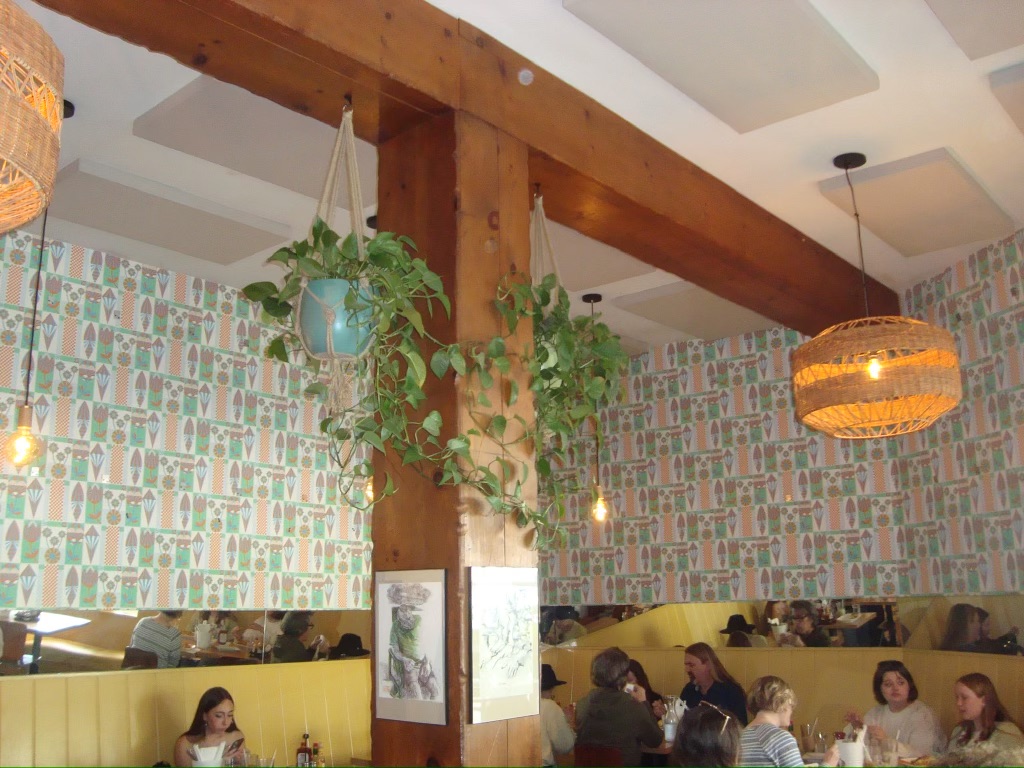
The chaotic coffee bar is serviced with the type of bang-wearing baristas that you just know will make you a delectable iced matcha. I admired the wicker lamp shades and the hanging sketches of mysterious portrait subjects. My eyes were drawn back to our table, and I snapped a photo of the girls’ and my finished plates—remnants of margherita pizza, toast, and lattes remained. It is yet another memento that I will keep, but this one is a forward-looking reminder.
I’ve always struggled with changes, reminiscing on even the most unhappy phases of my life with a sense of longing nostalgia, but at that moment I did not think of the past, nor the changes that were occurring in my life. Instead, I thought of the mementos that I hope to collect, as I continue to experience change, and people come into and out of my life. I did not think of the moments when things would change, and grounded myself in the honey-and-turquoise colored cafe. Beachwood Cafe may serve as a painful reminder for Harry Styles, but for me, it has become a hopeful one.
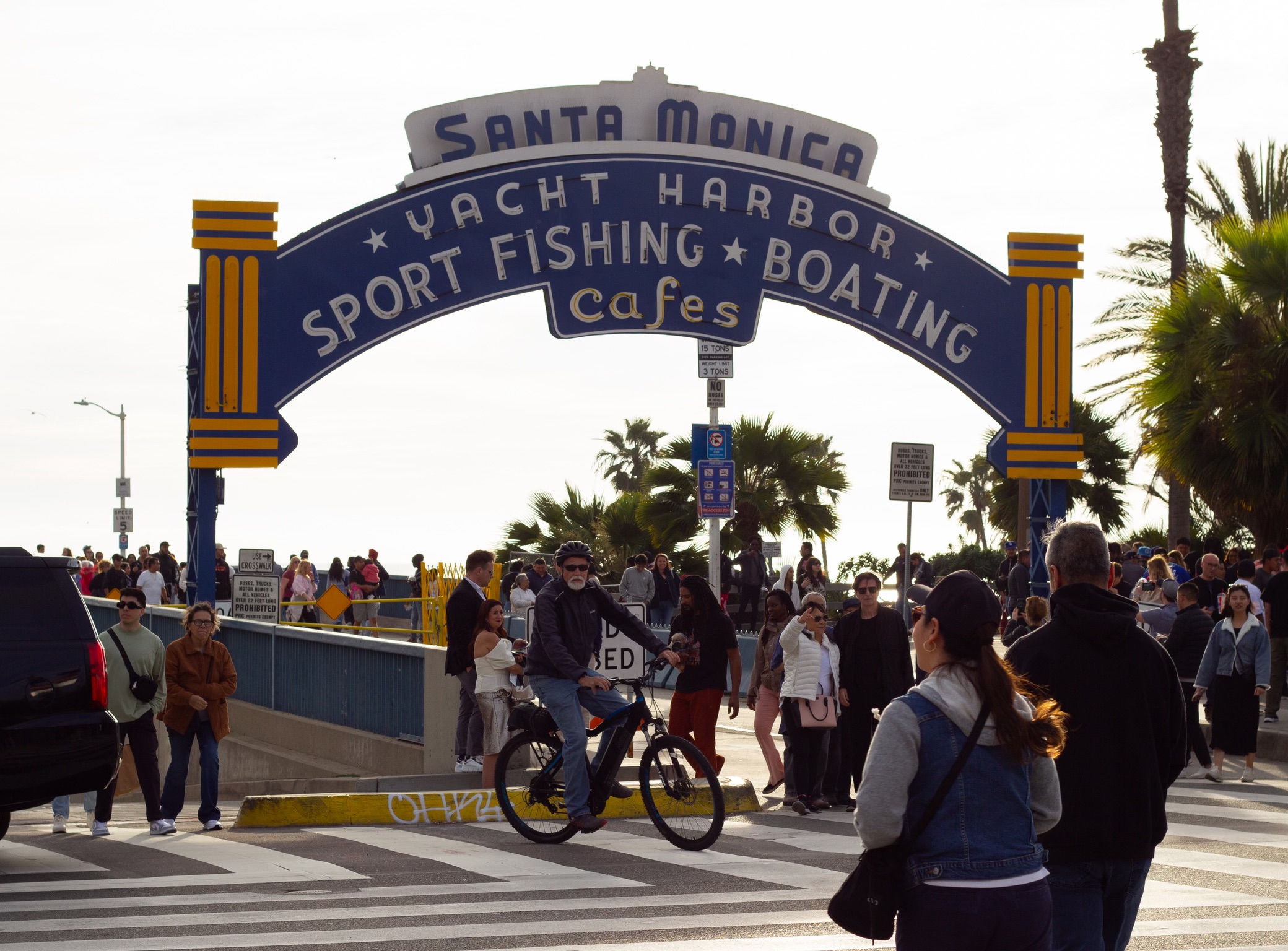
Jordyn’s Pick: Santa Monica Pier
Nothing compares to Los Angeles’s ultimate tourist trap, the Santa Monica Pier, filled with a myriad of tourists, overpriced rides, crowded restaurants, and arcade games—all with an ocean view. Growing up in Los Angeles, the pier was synonymous with summer adventures and childhood memories. There still remains a certain charm to the pier, a place where LA is encapsulated through pop culture and unmatched people-watching.
Arriving in Santa Monica on an overcast afternoon, we walked past Bubba Gump Shrimp, a landmark restaurant on the pier. Dylan posed a curious question: what came first, the restaurant or the iconic film Forrest Gump? The correct answer, of course, being Forrest Gump, a testament to the pier’s status as a hub for pop culture references. From films like Hannah Montana: The Movie to appearances in video games like Grand Theft Auto, the pier embodies culture unique to LA.
Like many exploring the city, the thought of bumping into a celebrity crossed my mind. I was clueless—Billie Eilish and Rachel Sennott had been mere feet away from us at the Independent Spirit Awards, held right in the pier’s parking lot. Being a fangirl at heart, it was probably for the better that I discovered this news during the car ride home. This ceremony, hosted annually, recognizes a variety of independent filmmakers and undoubtedly contributed to our parking struggles upon arrival.

From the various street performers entertaining crowds to appearances in music videos including “Not Strong Enough” by boygenius, the pier resonates as a vibrant and iconic soundscape of Los Angeles. The music video by boygenius is quintessentially Californian, as the group explores landmarks within LA, making a stop at the pier. Phoebe Bridgers happily films her bandmates as they ride the prominent yellow rollercoaster: Lucy Dacus (the realest roller coaster rider) joyfully screams in fear while Julien Baker simply sits peacefully along for the ride. Inspired by this portrayal, I decided to document our own day of exploration on video.
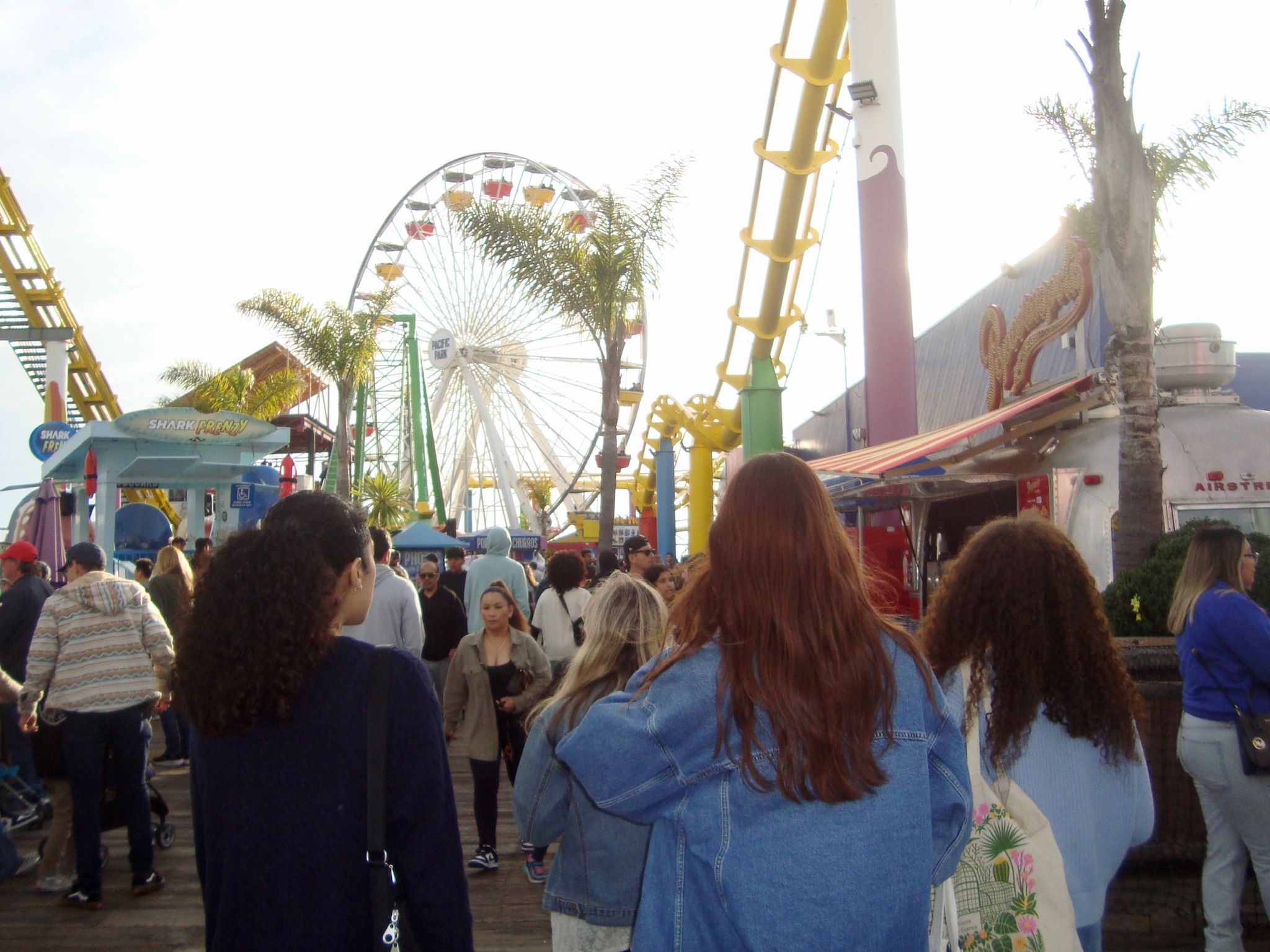
We entertained the idea of experiencing the rides firsthand, but the typical LA prices ($15 for a single ferris wheel ride) were simply a deterrent. Amidst the exuberant shouts echoing as the roller soared overhead and the diverse range of conversations and languages intermingled in the air, we found ourselves wandering aimlessly throughout the pier. Overflowing with a mix of vintage and modern games, the arcade was packed with people of all ages, and quite literally gave me sensory overload. Taking in the ocean breeze, we strategically succeeded in cramming all five of us into a tiny photo booth. After our photo strip printed and the sun began to set, we headed back to the car, catching a glimpse of Venice Beach on the way. I suggested a detour to the famous pink and black houses, internet icons that neighbor the pier. We opted to beat the infamous LA traffic and returned to Westwood.
Brooke’s Pick: Wilshire Boulevard
When Tyler, the Creator wrote “WILSHIRE”, the 15th track on his braggadocious, globetrotting 7th solo album Call Me If You Get Lost, he named it after an anchoring road of the Los Angeles terrain to close out a wide-ranging and worldly record with an emotional return home. WILSHIRE, despite its eight-minute-thirty-nine-second runtime, does not make a single reference to the geography of its namesake road. He doesn’t name-drop any of the cafes, restaurants, or theaters that populate its strip. We don’t know if any of the characters in the story live along this much-inhabited road, if they met there, if they frequented. All we know is that Wilshire means something to Tyler. We know that it relates to the saga of love, jealousy, and heartbreak that he relays in the song. The fact is, no two people engage with Wilshire in the exact same way. I spent a Sunday afternoon taking off from the Hammer museum by bus to travel the entire length of the road, absorbing the many faces and facades of Los Angeles’s Wilshire Boulevard.
The segment of Wilshire that Westwood calls its own bisects the lower half of our neighborhood, lying between the Hammer Museum and its neighbor the Oppenheimer Building, and this intersection is where I start my journey. I’m on the Hammer side of Wilshire, due eastbound, and I head into the “Only The Young: Experimental Art in Korea” exhibit to kill fifteen minutes as I wait for the 720 bus to Santa Monica.
Once boarded, I instantly get a glimpse of the many different scenes Wilshire wants to show me as I ride past across the Los Angeles National Cemetery, one of the largest military cemeteries in the state. My mood of contemplation is immediately upended as the reverent austerity of the orderly graveyard is juxtaposed by my entrance into Wilshire proper, just south of Brentwood, just North of Sawtelle. A sea of weed shops, Pilates centers, chiropractors. All of them seem strangely proud of the Wilshire name, and incorporate it into their business names with varying degrees of success and subtlety. It’s common business sense to incorporate directions into one’s business’s name, but I think it’s poetic how eager all kinds of people are to call upon the storied history of Wilshire street, the Wilshire name. In doing so, they’re also adding their own stories to the Wilshire tapestry. Maybe I’m heroizing these regular small business owners a little, I think, as my eyes glaze over the homogenized storefronts.
But maybe, by putting the WILSHIRE name on his album, Tyler was doing something similar? No one person writes the story of a road like this. It connected the Tongva natives to the Pacific Ocean before the arrival of the conquistadors, and was paved over 200 years ago by a developer called Gaylord Wilshire, and all of the modern residents of the road inherit this history. Tyler would probably find the name Gaylord funny. Because it is.
Wilshire is full of good stories, and anyone who chooses to spend any fraction of their life here runs the risk of submitting their story to the history of the road. That’s what we’re all doing. There’s always a chance that something might happen, that it might get remembered.
I headed off the bus once I was in Santa Monica, and walked to the end of the road. It terminates at a cliff that looks over the beach. I feel the ocean breeze on my face while I stay a minute to look over the wooden railing. Then I turn around to face Wilshire head on. The statue of St. Monica gazes alongside me. 16 miles of urban eclecticism ahead of me to traverse its length, and another 13 to take me back home to the Hammer, my touching-off point.

I don’t have the space nor time to relay the specifics of the rest of my day’s journey. I was liberal with my disembarking from buses, exploring anything I thought looked interesting. Chasing stories. Stopped for museums. Stopped for coffee, twice. I think of this exploration not as urban exploration, but more like urban excavation. LA is notorious for its endless sprawl. How do you conquer it and become familiar with the landscape? You do it layer by layer. Excavate an endless grid by looking at each of its sediment roads under a microscope, one at a time.

There was no reason that this exploration had to be Wilshire; there are many other iconic roads that hold their own impressive stock in LA’s cultural history. But urban excavation, I argue, is the best way to develop a close relationship with a landscape. I’m still in my second year of living here as my second home, and Los Angeles is nothing like the suburbs of San Diego. Through urban excavation, with Wilshire as my focus, I can build a familiarity with the landscape so I can live stories of my own here, just like the Tongva peoples did, just like Gaylord did, and just like Tyler did.
Dylan’s Pick: The Troubadour
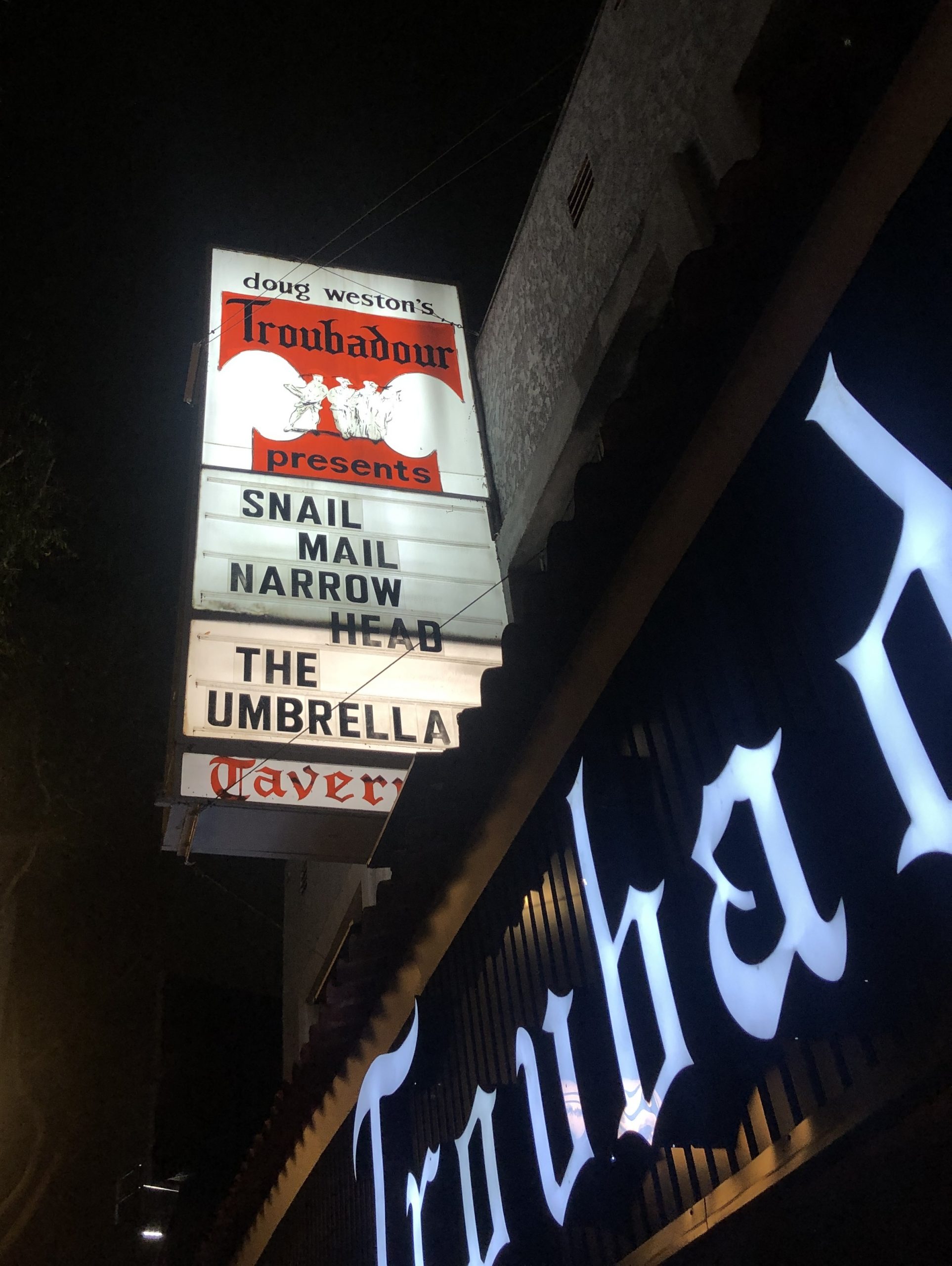
As I drove beneath the rainbow-colored lights strung across Santa Monica Boulevard, I couldn’t help but notice that the street was uncharacteristically quiet. It made sense: a cold, wet Monday night isn’t the best for clubbing, and yet there I was, making my way to Doug Weston’s Troubadour.
Nearing the venue, I found myself reflecting on the first time I came to West Hollywood as an awkward, closeted teen. It was a warm, summer day—quite the antithesis of tonight—and the sidewalks were busy with tourists and locals alike. I marveled at the groups of queer Angelinos gathering at gay bars, and the pride flags and rainbow crosswalks decorating the boulevard. Now, I’m back here again, as an out-and-proud twenty-something on her way to see a rising queer artist (and listen to her extensive discography of sapphic songs): Snail Mail.
The Troubadour is one of my favorite venues, if only for its ambience and intimacy. The 500-person venue sold out long before tonight’s show, which is evident as I scan the tightly packed crowd around me. I’m surprised by the sheer variety of Snail Mail’s fanbase: where I spotted the expected lesbian couples and queer friend groups, I also saw beer-wielding white dudes head-banging along and even some seventy-year-olds sitting up at the balcony, all visibly enjoying Snail Mail’s music.
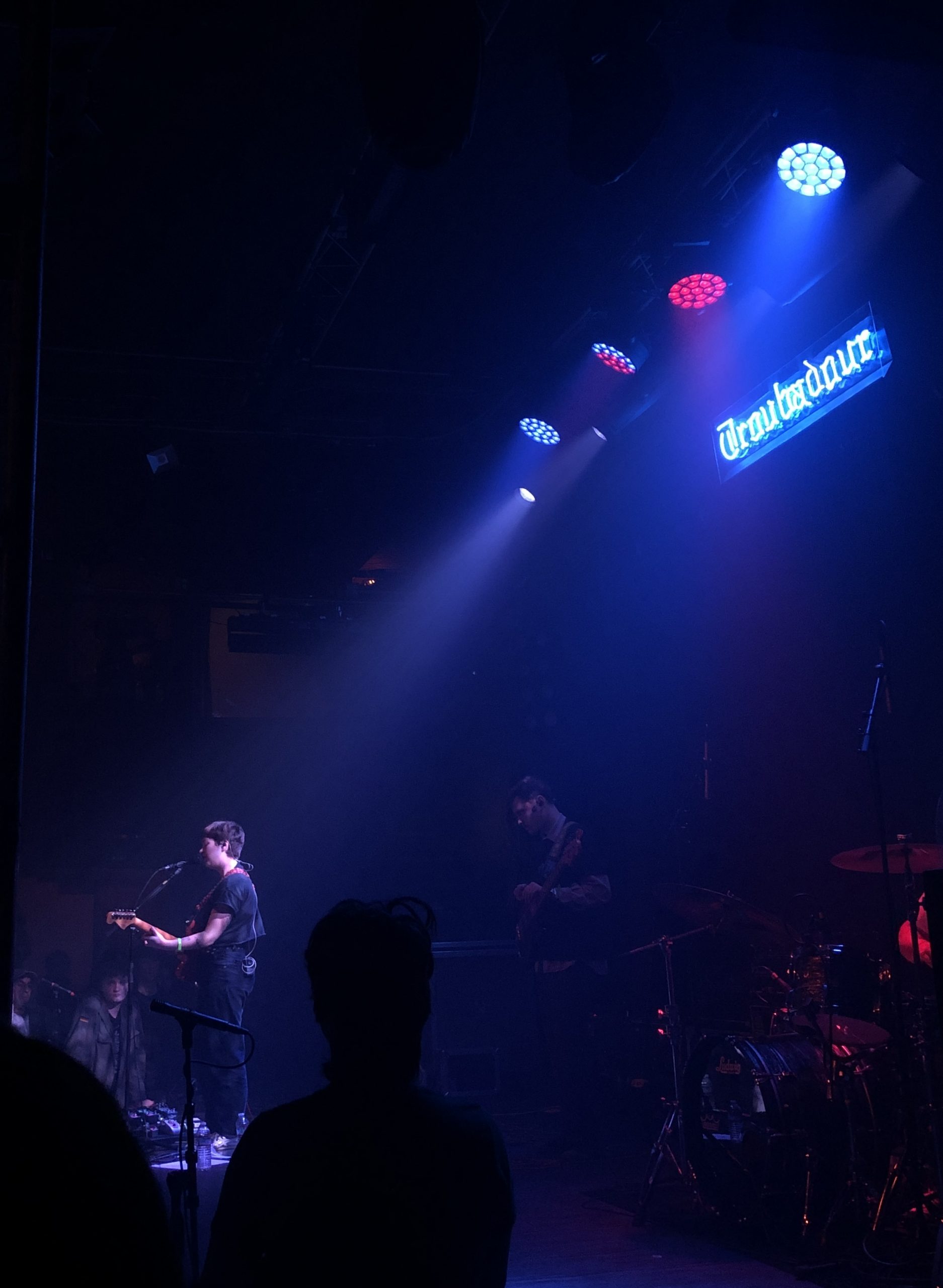
Like the Troubadour itself, Snail Mail’s stage presence was small and charming: it was just her, her bassist, and her drummer, but I never once felt like her performance was lacking. Her soulful voice and blaring guitar were more than enough to fill the room, and I was thoroughly impressed by her skills as a guitarist. Then I remembered, she was recently named one of Rolling Stones’s “Greatest Guitarists of All Time”. After a generous setlist (I was shocked by how quickly an hour and a half flew by), she closed with a never-before-heard cover of “Teenage Dirtbag” by Wheatus.
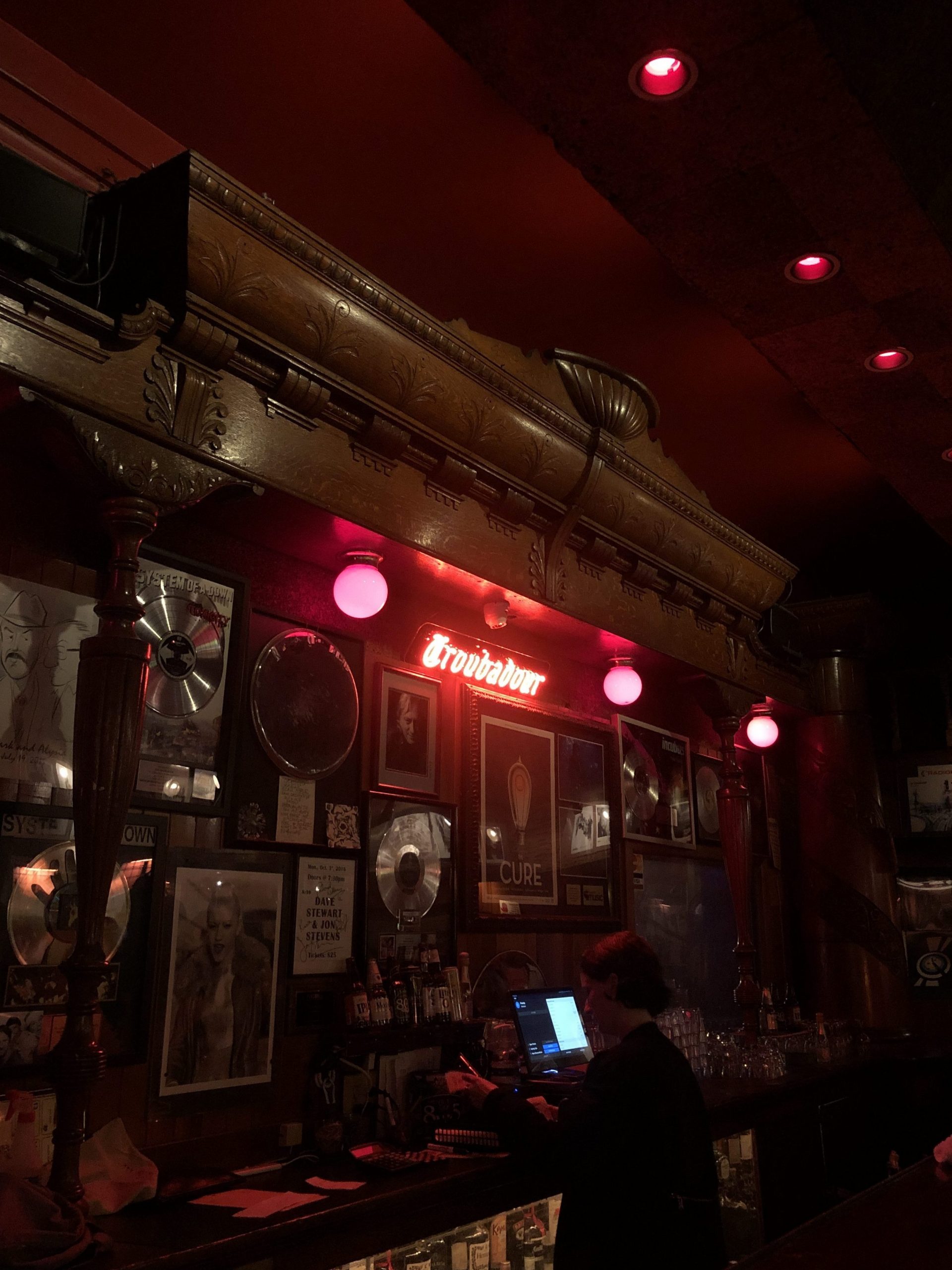
After the concert, I lingered by the bar, waiting for a bathroom to open up, and watched excited fans chat with the openers and line up to buy Snail Mail’s merch (I, too, was tempted by it). That’s when, for the first time, I noticed a plethora of music memorabilia physically spelling out the Troubadour’s expansive history. Lining the walls was an eclectic display of signed guitars and faded photographs of larger-than-life icons who once graced the Troubadour’s tiny stage. The nightclub has been at the heart of music history since it first opened its doors in 1957. While rising artists like Snail Mail commonly perform at the compact venue, it has also hosted shows by household names like Bob Dylan and Fiona Apple, and it launched Elton John’s career in the U.S. The club has overseen several eras of music history, and was an iconic venue at the center of separate waves of folk, punk, and rock music. As I finally bid the Troubadour farewell for the night, I was already looking forward to my inevitable return to the venue for some future concert.
Where I sometimes felt like an outsider growing up in conservative Orange County, the unapologetic queerness and rich musical history embedded in Santa Monica Boulevard, and Los Angeles as a whole, remind me that I’m exactly where I’m meant to be.
Listen to the playlist of our day below!
By the Digi Press Interns of Winter ’24 (Kayalani DeGrave, Jordyn Feenberg, Au’Laila Million, Brooke Ortiz, Caroline Sanchez, & Dylan Simmons)

